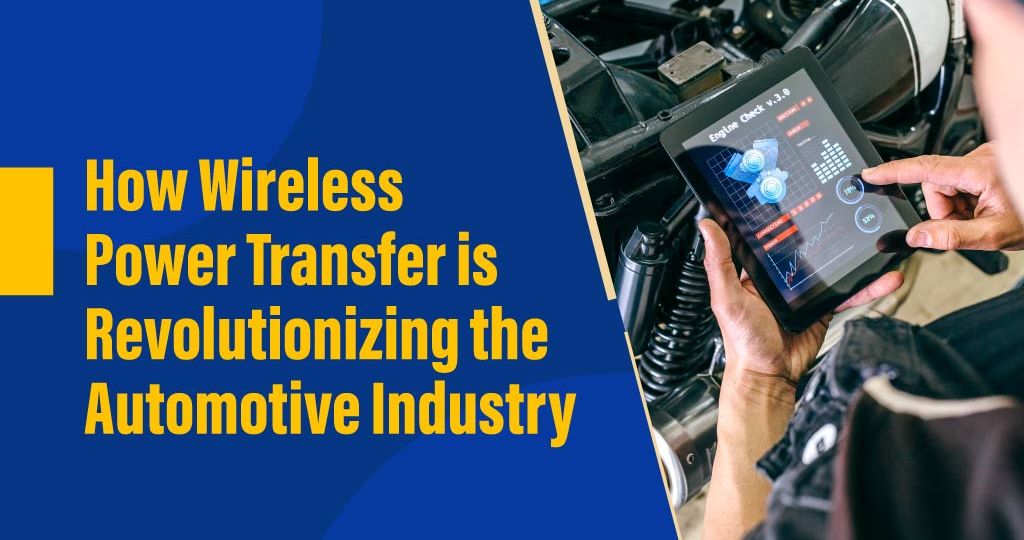
From internal combustion engine development to the more recent introduction of electric vehicles, the automotive industry has seen incredible advancements. A relatively new technology called wireless power transfer can change how we charge our cars. WPT also known as wireless charging is revolutionizing the automotive industry by providing an easier, more effective, and environmentally friendly means of recharging electric cars. Top electrical engineering colleges in Coimbatore can offer valuable hands-on opportunities for students who wish to pursue a career in automobile industry.
Wireless Power Transfer
Electrical energy can be transferred wirelessly that is without the use of physical connectors or cables from a power source to an electrical load. This indicates that EVs can be charged independently of a charging station when it comes to electric automobiles. Rather, electromagnetic fields are used to transmit energy wirelessly.
By far the most popular WPT technique for EVs is inductive charging. This procedure uses a receiver that is mounted in the car and a charging pad that is located on the ground. An electromagnetic field is produced by an alternating current passing through a coil in the pad when the car is positioned over it. The receiver’s coil experiences a current induction from this field, which is subsequently transformed back into a direct current to charge the vehicle’s battery.
Benefits of Wireless Power Transfer
Convenience and Accessibility
The convenience of WPT is among its biggest benefits. Plugging in a cable is necessary for traditional EV charging which can be difficult and time-consuming. This step is removed with wireless charging, making the process as easy as just parking the car next to a charging pad. This simplicity of use can be especially helpful in cities where it might be difficult to locate and use charging outlets.
Wireless charging stations that allow for continuous charging can be implanted in a variety of places including streets and even highways. Dynamic charging is the idea that enables cars to charge while they are moving, greatly decreasing downtime and increasing the range of electric vehicles.
Improved Durability and Safety
By doing away with physical connectors, which might deteriorate with time or be exposed to the environment, wireless charging further improves safety. There is no chance of trip risks or electrical malfunctions because of broken connectors when cables are present. WPT is a more dependable and long-lasting option for EV charging infrastructure because of its durability.
Enhanced Sustainability and Efficiency
Although WPT systems’ efficiency has always been a source of concern, technological developments have greatly enhanced their functionality. Efficiency rates for modern wireless charging systems are on par with those of conventional plug-in chargers. Furthermore, WPT’s easy integration into daily activities may promote more frequent charging, which improves battery management and extends battery life.
WPT may reduce the environmental effect of EV charging infrastructure from a sustainability standpoint. The lifespan of wireless charging pads is longer than that of regular charging stations, and they require less maintenance. Furthermore, the capacity to dynamically charge automobiles may lessen the requirement for huge battery capacities, which in turn may decrease the demand for raw materials used in the manufacturing of batteries.
Impact on the Automotive Industry
Accelerating EV Adoption
Wireless Power Transfer has the potential to expedite the adoption of electric vehicles by removing some of the major barriers to entry. WPT’s convenience and usability can help EVs appeal to consumers who might otherwise be put off by the trouble of charging. Moreover, WPT’s incorporation into public infrastructure can offer a more comprehensive and easily accessible network of charging stations, reducing range anxiety and promoting the adoption of electric vehicles by a greater number of individuals.
Transforming Urban Mobility
The management of mobility in metropolitan areas can be revolutionized by the introduction of wireless charging. Cities may establish a mobility ecosystem that is more sustainable and efficient by integrating charging pads into parking lots and roadways. WPT is especially useful for autonomous electric vehicles, as it allows them to charge without the need for human assistance, allowing for continuous operation and a reduction in downtime.
Driving Innovation in Automotive Design
WPT can stimulate creative car design as well. Manufacturers can create automobiles that are lighter and more aerodynamic without the need for big, bulky batteries. This may result in increased effectiveness and lower production costs. New car architectures and business models such as shared mobility services and autonomous fleets may be made possible by the incorporation of WPT technology.
Economic and Environmental Benefits
Widespread WPT adoption may have positive effects on the economy and environment. Cities and companies can save money on installation and maintenance by eliminating the need for a large-scale charging infrastructure. EV owners may experience a reduction in operating costs as a result of the enhanced longevity and efficiency of wireless charging systems.
With wireless power transfer, charging electric cars will be easier, more effective, and environmentally friendly. This might completely change the automobile business. It is a game-changer in the fight for a more environmentally friendly and economically viable transportation system because of its capacity to spur the adoption of electric vehicles, improve urban mobility, spur innovation in automotive design, and offer both economic and environmental benefits. WPT will be vital in influencing the automobile industry and propelling the shift to a more environmentally friendly society as we progressively approach a day when electric vehicles will predominate on the roadways.



